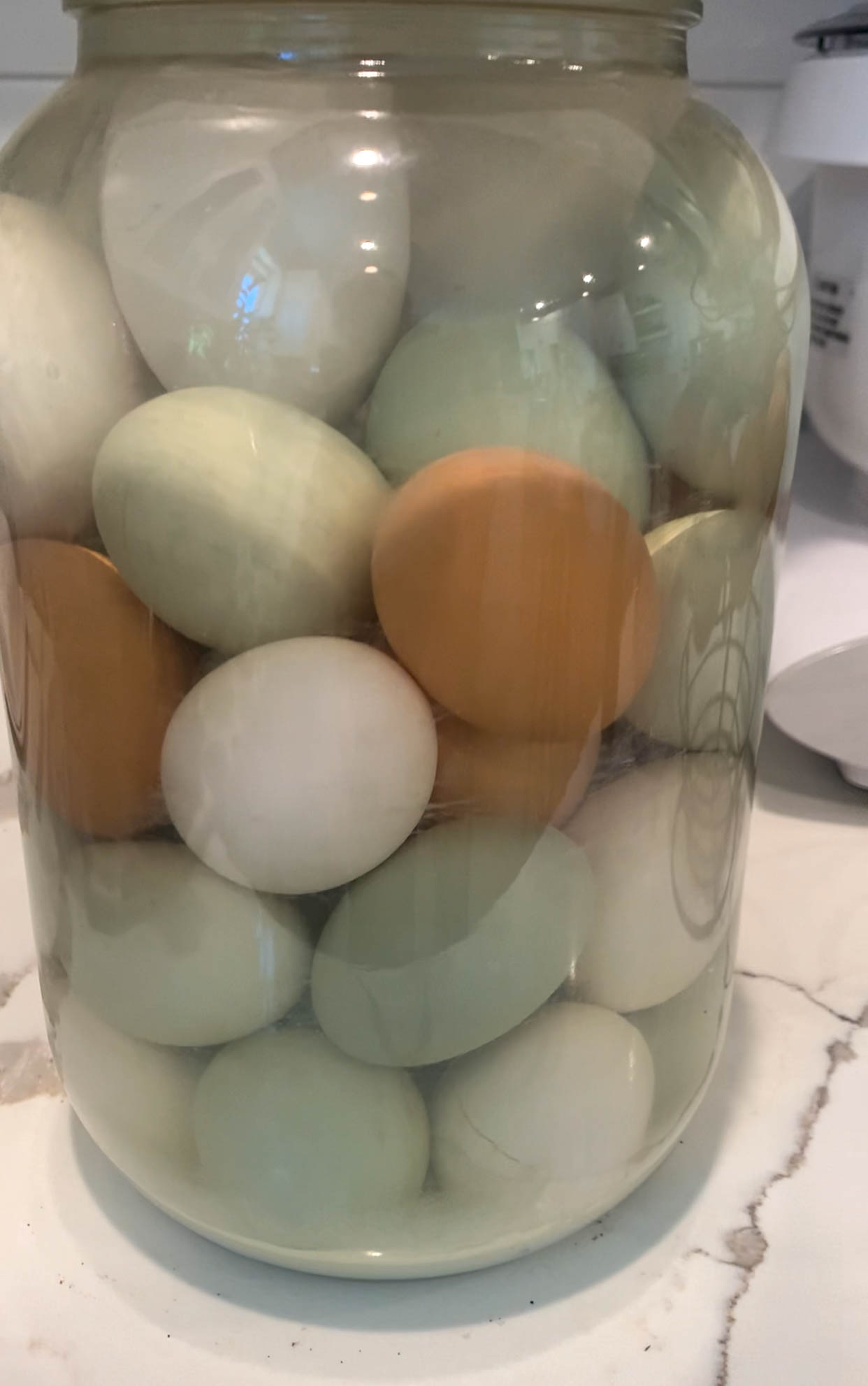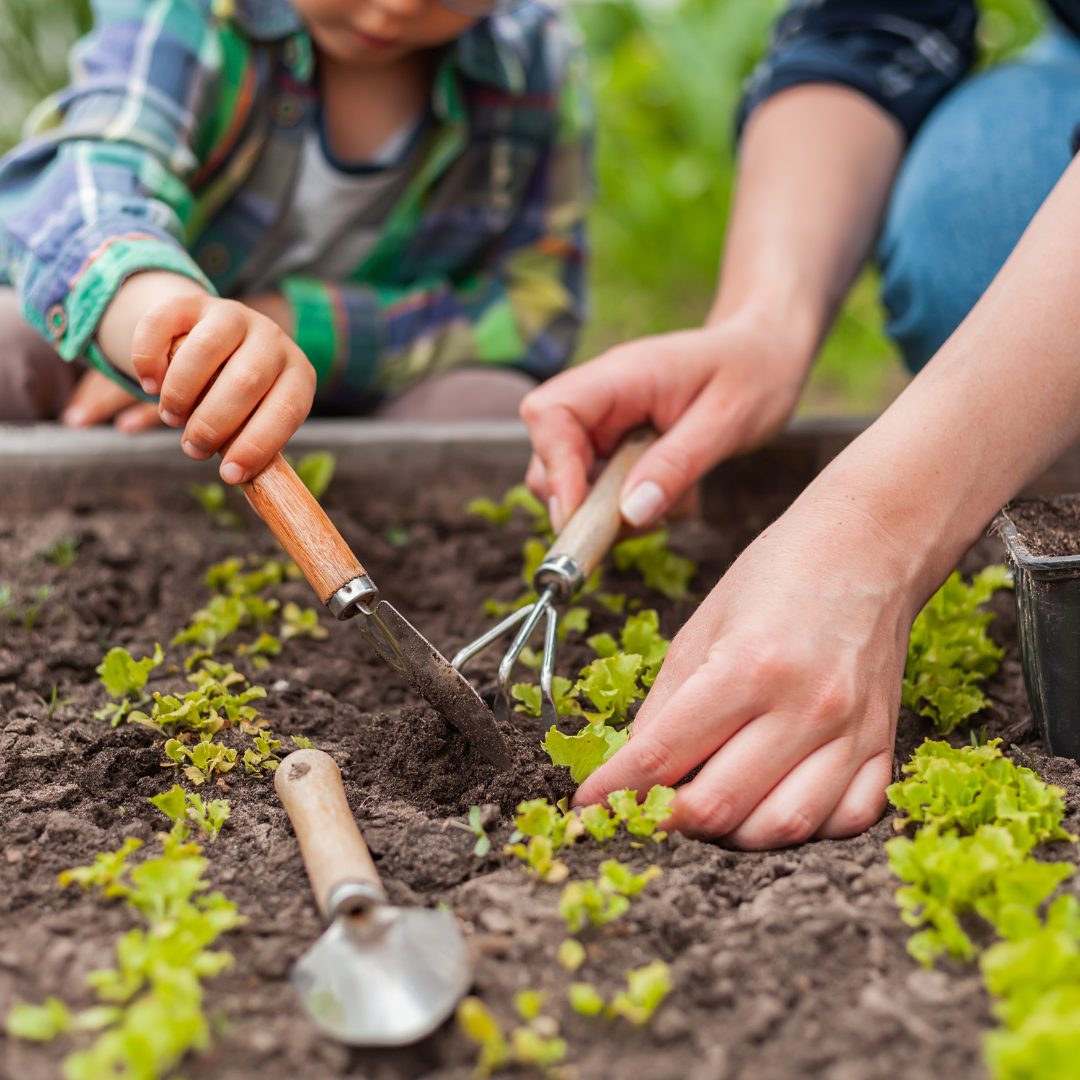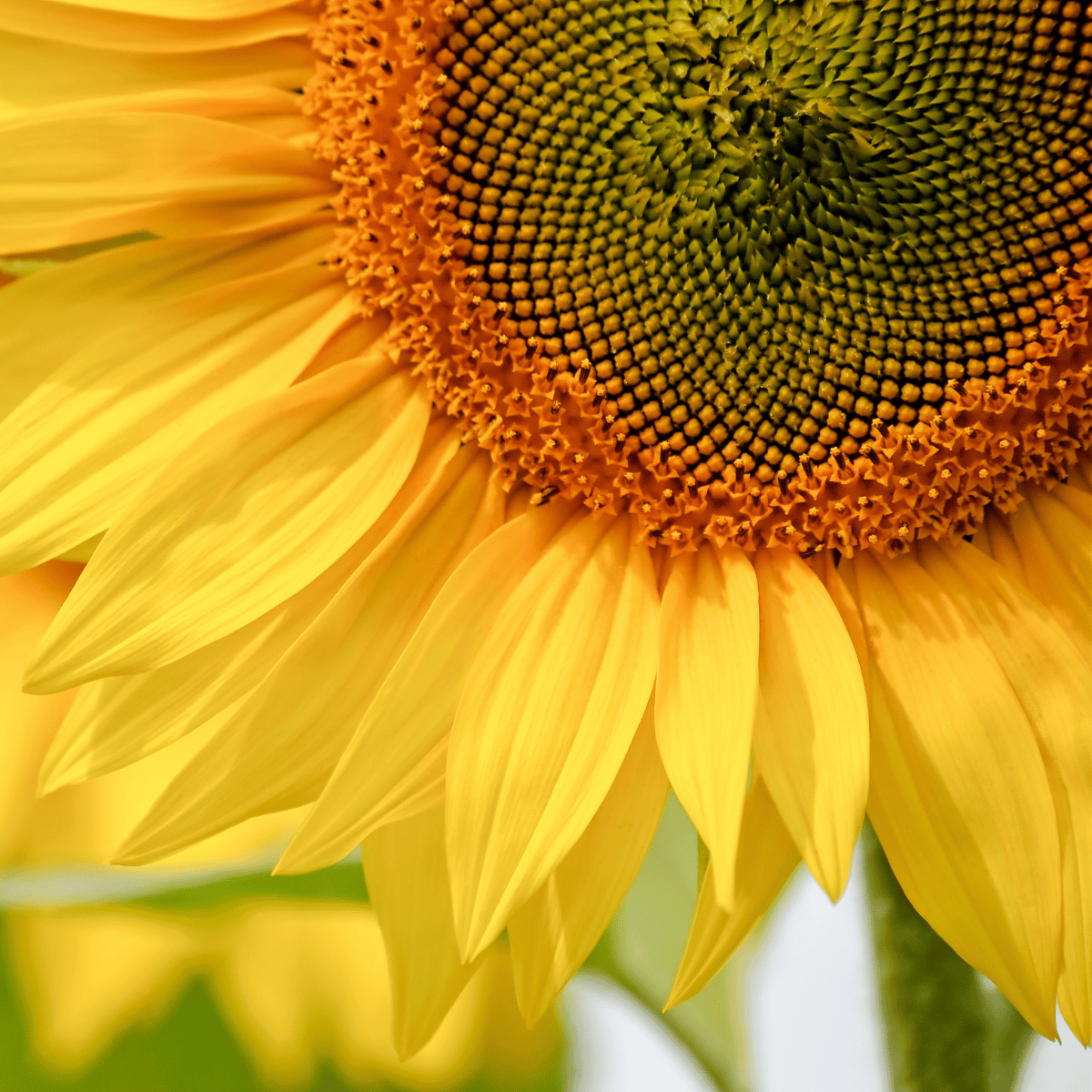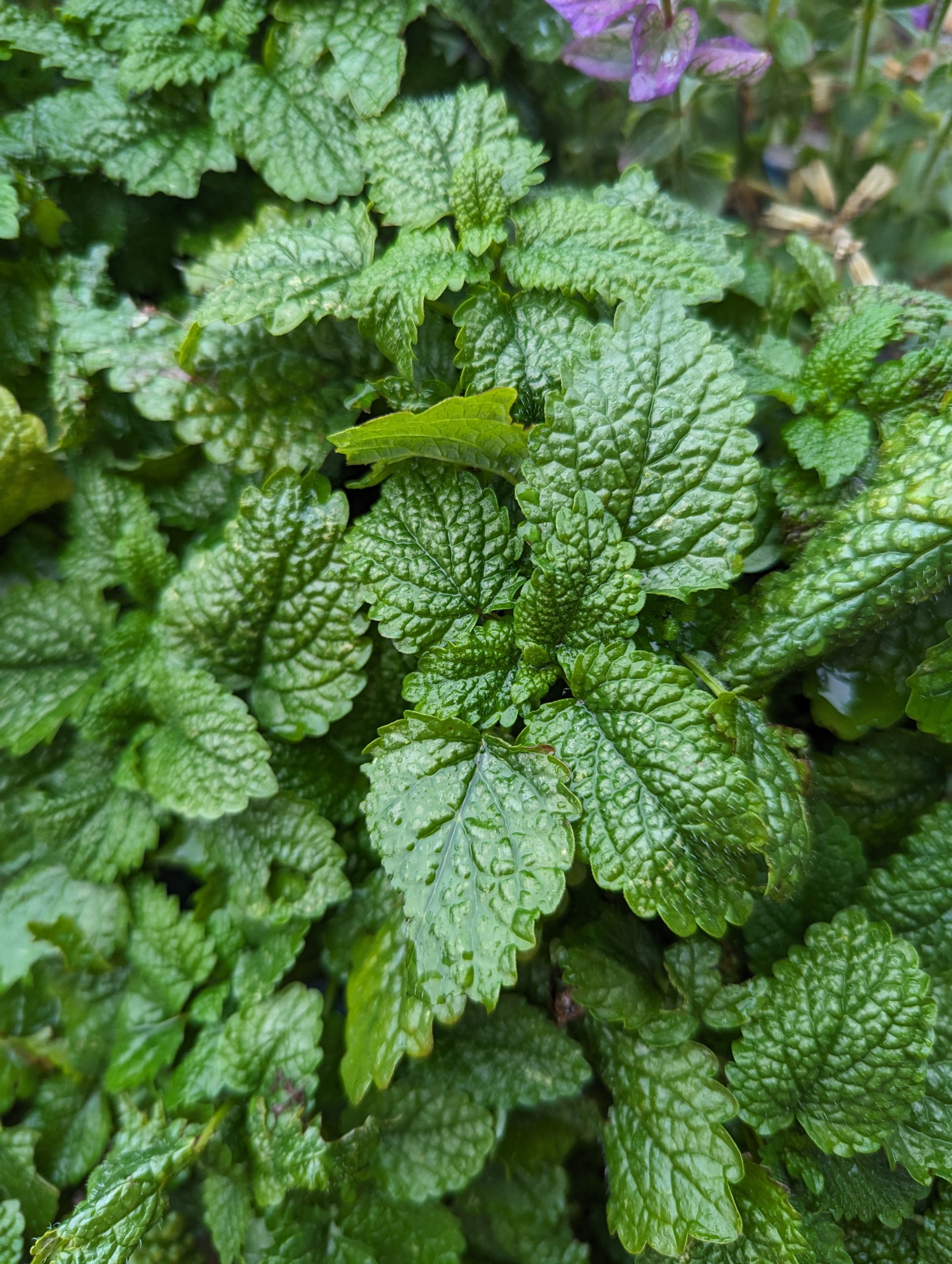Growing Zucchini Vertically: Maximizing Yield in Small Spaces
Are you wondering if you can trellis zucchini? Welcome to my guide on maximizing the zucchini harvest in my small garden through vertical gardening techniques. Zucchinis have always been a favorite in my vegetable garden, but their sprawling vines often left me feeling like I was running out of space. Additionally, challenges like powdery mildew and vine borers seemed to plague my plants, especially in the confined quarters of my garden bed.
However, I refused to let limited space dampen my gardening dreams. That’s when I discovered vertical gardening. By training my zucchini vines to grow vertically, I found a solution that not only saved space but also improved airflow around the plants, reducing the risk of diseases. Plus, it made maintenance and harvesting a whole lot easier.
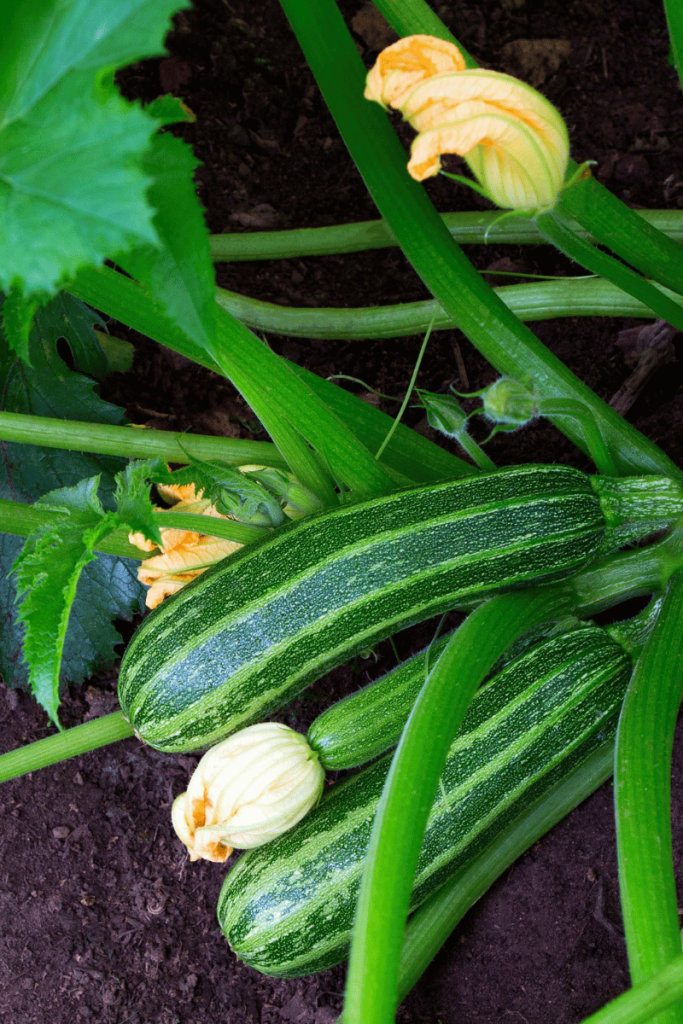
In this comprehensive guide, I’ll share everything I’ve learned about growing zucchini vertically. From selecting the right variety and building the perfect trellis to planting, caring for your zucchini plants, and harvesting a plentiful bounty, I’ve got you covered. Whether you’re a seasoned gardener looking to maximize your harvest or a beginner eager to try your hand at vertical gardening for the first time, join me in growing our zucchini in a new fashion.
So, if you’re ready to transform your small garden space, let’s dive in and discover the wonderful world of vertical zucchini gardening right here in my backyard! Get ready to enjoy an abundant harvest of this versatile vegetable (fruit), all thanks to vertical gardening.
Understanding Zucchini Growth Habits
Zucchini plants, scientifically known as Cucurbita pepo, are vigorous growers that belong to the squash family. These plants boast large, dark green leaves and produce elongated fruits that range from light green to deep yellow. What makes zucchini particularly challenging to manage in small spaces is their vining nature.
Left to their own devices, zucchini vines can sprawl across the garden bed, quickly monopolizing precious space and overshadowing neighboring plants. Understanding the growth habits of zucchini plants is crucial for successful cultivation, especially in confined areas where space is limited.
Common Problems: Powdery Mildew and Vine Borers
Despite their resilience, zucchini plants are not without their share of challenges. Two common problems that often plague zucchini growers are powdery mildew and vine borers.
Powdery mildew, a fungal disease characterized by white powdery patches on the leaves, stems, and fruits, thrives in warm, humid conditions. Left unchecked, powdery mildew can weaken the plant and hinder fruit production.
Vine borers, on the other hand, are notorious pests that lay their eggs at the base of zucchini plants. Upon hatching, the larvae tunnel into the stems, causing wilting, rotting, and ultimately, plant death.
These challenges pose significant threats to zucchini cultivation, especially in small garden spaces where the spread of disease and pests can quickly escalate.
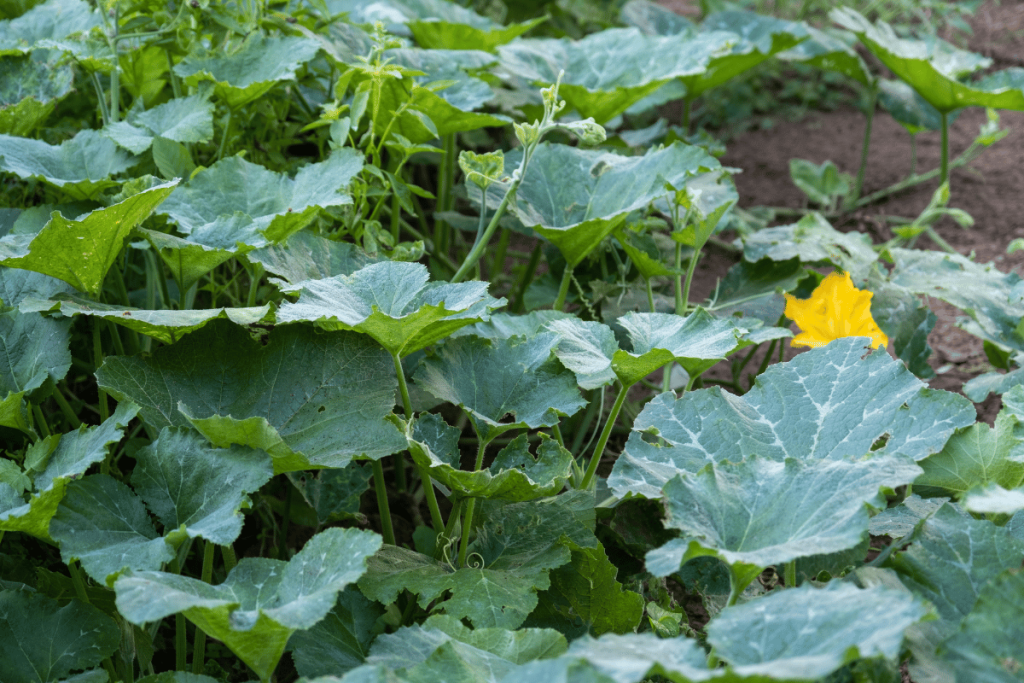
Importance of Air Circulation and Disease Prevention
One of the keys to successful zucchini cultivation, particularly in small spaces, is ensuring good air circulation around the plants. Adequate airflow helps to reduce humidity levels and minimize the risk of fungal diseases like powdery mildew. Vertical gardening offers a practical solution by elevating zucchini vines off the ground, allowing air to circulate freely around the plants. Additionally, proper spacing between plants and strategic placement of trellises can further enhance airflow and create a healthier growing environment. By prioritizing good air circulation and implementing preventive measures against fungal diseases, gardeners can safeguard their zucchini plants and maximize their yield, even in compact garden spaces.
Benefits of Vertical Zucchini Gardening
Vertical gardening offers a lot of benefits for zucchini enthusiasts, especially those with limited garden space. Here are some of the advantages of adopting this space-saving technique.
Maximizing Garden Space with Vertical Structures
In a small space, every inch counts. Fortunately, vertical structures like wooden trellises or a tomato cage can provide an ingenious solution to the problem of limited space. By training zucchini vines to grow vertically, gardeners can make the most of their available space, even in compact settings. This space-saving method allows for the cultivation of zucchinis alongside other garden vegetables, maximizing both yield and variety. Gone are the days of sacrificing precious garden real estate for sprawling zucchini vines. With vertical gardening, you can enjoy a thriving garden filled with an abundance of fresh produce, all within the confines of your small garden space in your home garden.
Improved Air Circulation and Reduced Risk of Powdery Mildew
As mentioned already but not to be forgotten, one of the greatest challenges faced by zucchini growers, especially in humid climates, is the dreaded powdery mildew. This fungal disease can wreak havoc on zucchini plants, causing leaves to become covered in a white powdery substance and eventually leading to stunted growth and reduced fruit production. However, vertical gardening offers a natural solution to this common problem. By elevating zucchini vines off the ground, vertical structures promote better air circulation around the plants, helping to prevent the buildup of moisture and reduce the risk of powdery mildew. With proper airflow, zucchini plants can thrive in even the most challenging growing conditions, producing healthy foliage and abundant fruit throughout the growing season.
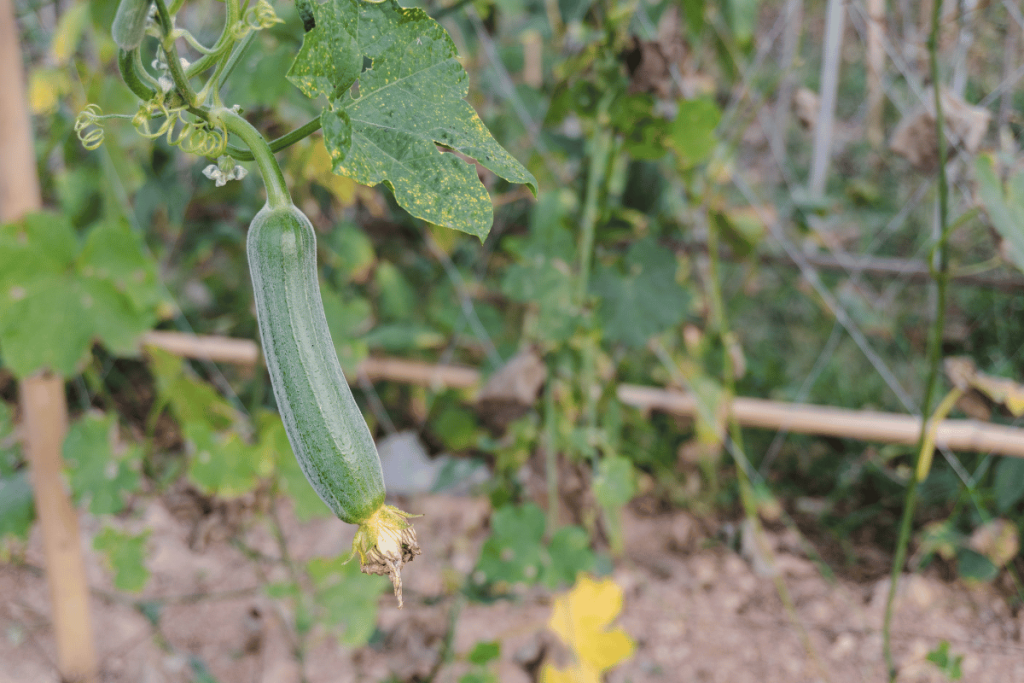
Easy Access for Harvesting Female Flowers and Zucchini Fruit
One of the joys of growing zucchinis is the anticipation of harvesting fresh, flavorful fruits straight from the garden. However, traditional ground-based cultivation methods can make harvesting a cumbersome task, often requiring gardeners to navigate through dense foliage and prickly stems to reach the coveted zucchini fruit. Vertical gardening changes the game by providing easy access to both female flowers and zucchini fruit. With vines trained to grow vertically, female flowers are more prominently displayed, making pollination and fruit set a breeze. Additionally, ripe zucchinis hang conveniently within reach, eliminating the need for bending or stooping to harvest. This accessibility not only simplifies the harvesting process but also encourages gardeners to stay engaged with their plants, fostering a deeper connection to the gardening experience.
Selecting the Right Zucchini Variety
Choosing the right zucchini variety is a crucial step in ensuring a successful harvest, especially when space is limited. Let’s explore some key considerations when selecting the perfect zucchini variety for your garden
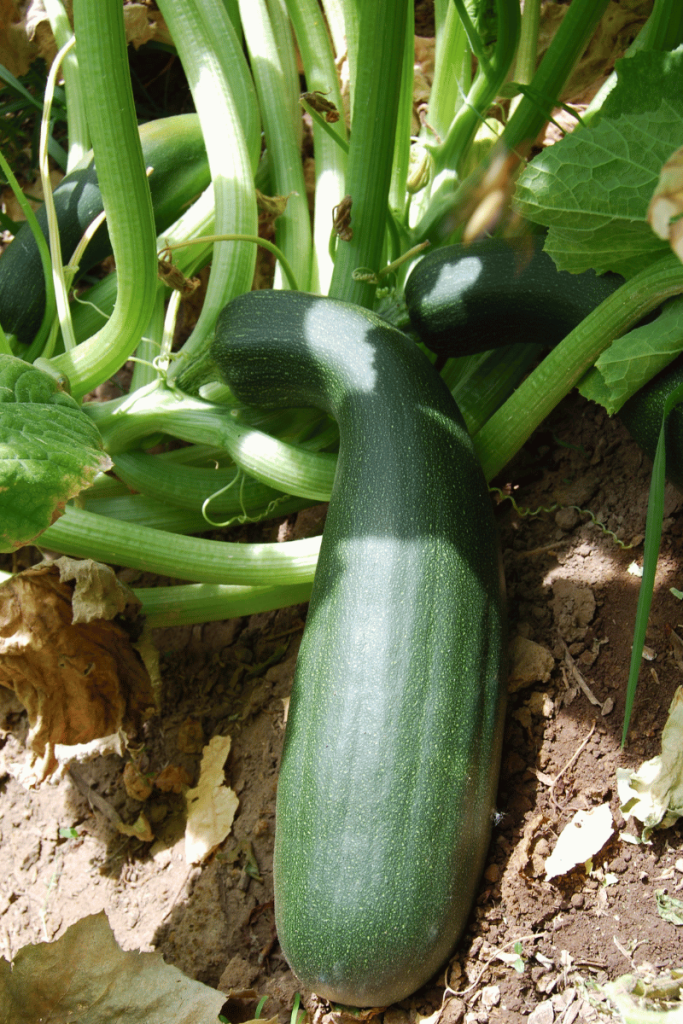
Discussion on Bush Varieties for Compact Spaces and Vining Varieties for Vertical Growth
When it comes to zucchini varieties, there are two main types to consider: bush varieties and vining varieties. Bush varieties, as the name suggests, are compact and bushy in growth habit, making them ideal for small garden spaces or container gardening. These varieties typically produce smaller plants with a more concentrated fruit set, making them perfect for gardeners looking to maximize space without sacrificing yield. On the other hand, vining varieties are well-suited for vertical growth, thriving when trained to climb trellises or other support structures. These varieties tend to produce longer vines and require more space to sprawl, making them better suited for larger garden plots or raised beds. By understanding the differences between bush and vining varieties, gardeners can choose the right zucchini variety to suit their space requirements and growing preferences.
Considerations for Different Zucchini Varieties and Their Space Requirements
When selecting a zucchini variety, it’s essential to consider factors such as space requirements, fruit size, and flavor profile. Some zucchini varieties, like the compact “Bush Baby” or “Astia,” are specifically bred for small spaces and container gardening, making them ideal choices for urban gardeners or those with limited garden space. These varieties produce compact plants with high yields of delicious, tender fruit, perfect for small families or individual gardeners. On the other hand, larger garden plots may benefit from vining varieties like “Black Beauty” or “Costata Romanesco,” which produce larger fruits and require more space to sprawl. By considering factors such as space availability and personal preferences, gardeners can select the perfect zucchini variety to suit their unique growing conditions.
Sourcing Zucchini Seeds or Seedlings from Garden Centers or Online Suppliers
Once you’ve decided on the right zucchini variety for your garden, it’s time to source seeds or seedlings to get started. Zucchini seeds and seedlings can be found at local garden centers, nurseries, or online suppliers, offering a wide range of varieties to choose from. When selecting seeds or seedlings, be sure to choose high-quality, disease-resistant varieties suited to your growing conditions. Consider purchasing from reputable suppliers that offer a diverse selection of zucchini varieties and provide helpful growing tips and resources. Whether you prefer to shop locally or online, sourcing zucchini seeds or seedlings from trusted sources ensures a successful start to your zucchini-growing journey.
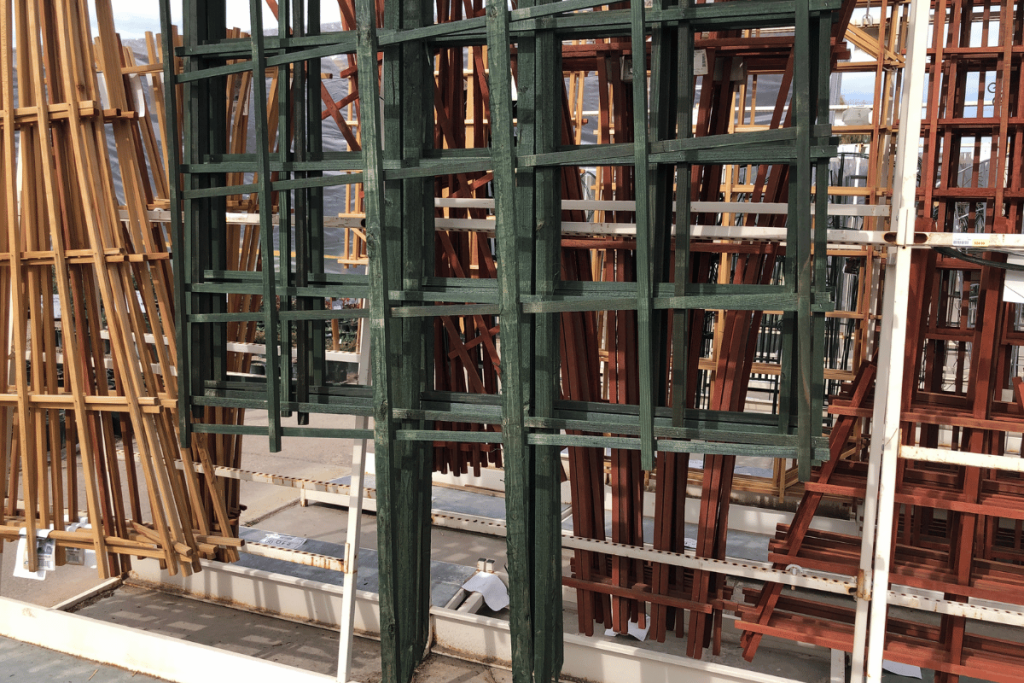
Building and Installing a Zucchini Trellis
Building a sturdy trellis is essential for supporting your zucchini vines as they grow vertically. Here’s everything you need to know to construct and install a reliable trellis for your zucchini plants:
Types of Trellis Structures: Wooden Stakes, Chicken Wire, or Arch Trellises
There are various types of trellis structures to choose from, each offering unique benefits for supporting zucchini vines. Wooden stakes are a popular choice for their simplicity and affordability, providing a sturdy framework for vertical growth. Alternatively, chicken wire trellises offer excellent support for climbing vines, allowing for easy training and maintenance. For a more decorative option, consider arch trellises, which add visual interest to the garden while providing ample support for zucchini vines. By selecting the right trellis structure for your garden space, you can create a vertical support system that meets your needs and complements your gardening style.
Step-by-Step Guide to Building and Installing a Strong Trellis for Vertical Support
Building a strong trellis for your zucchini plants is easier than you might think. Here’s a step-by-step guide to help you get started:
- Choose a suitable location: Select a sunny spot in your garden with enough space to accommodate the trellis and zucchini plants.
- Gather materials: Depending on your chosen trellis structure, gather materials such as wooden stakes, chicken wire, or arch trellis kits.
- Prepare the ground: Clear the area of any debris and level the ground where the trellis will be installed.
- Install the trellis: If using wooden stakes, hammer them into the ground at regular intervals along the planting row. Attach the chicken wire or arch trellis panels to the stakes using screws or zip ties.
- Secure the trellis: Ensure the trellis is firmly anchored to the ground to withstand the weight of growing zucchini vines. Consider adding additional support, such as cross braces or stakes, for added stability.
- Train the vines: Once the trellis is installed, gently guide the zucchini vines onto the trellis structure, encouraging upward growth.
By following these simple steps, you can build and install a strong trellis that provides excellent support for your zucchini plants throughout the growing season.
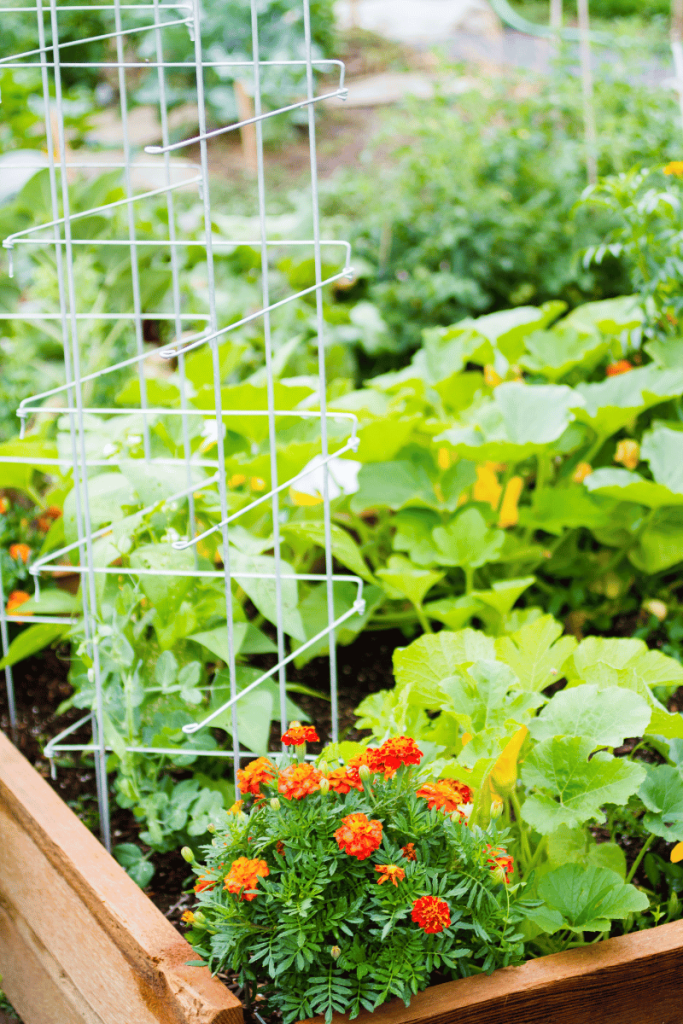
Consideration of Alternative Methods like Row Covers or Raised Beds
While trellises are a popular choice for supporting zucchini vines, alternative methods like row covers or raised beds can also be effective in certain garden settings. Row covers protect from pests and inclement weather while creating a microclimate that promotes healthy growth. Raised beds offer improved drainage and soil aeration, making them ideal for zucchini cultivation in areas with poor soil quality or limited space. Consider experimenting with different methods to find the best solution for your garden’s unique needs and growing conditions.
Planting and Caring for Zucchini
Planting and caring for zucchini properly is crucial for ensuring healthy growth and a bountiful harvest. Let’s explore the essential steps and maintenance tips to help your zucchini thrive
Site Selection and Preparation of Garden Soil with Organic Matter
Before planting your zucchini, select a sunny spot in your garden with well-drained soil. Zucchinis thrive in full sun, so choose a location that receives at least 6-8 hours of sunlight per day. Prepare the soil by incorporating plenty of organic matter, such as compost or aged manure, to improve soil structure and fertility. Work the organic matter into the soil to a depth of 8-12 inches, ensuring a nutrient-rich growing environment for your zucchini plants.
Planting Zucchini Seeds or Seedlings in Moist Soil and Providing Full Sun
Once the soil is prepared, it’s time to plant your zucchini seeds or seedlings. If planting seeds directly in the garden, sow them 1 inch deep and space them 2-3 feet apart in rows. Keep the soil consistently moist but not waterlogged to promote germination. If starting with seedlings, transplant them into the garden after the last danger of frost has passed, ensuring they are planted at the same depth as they were in their containers. Provide ample space between plants to allow for proper air circulation and growth. Remember to water the seedlings thoroughly after planting to help them establish roots in their new environment.
Zucchinis thrive in full sun, so choose a location that receives at least 6-8 hours of sunlight per day. Plant them where they’ll receive maximum sunlight exposure throughout the day.

Maintenance Tips Including Watering with a Soaker Hose and Applying Neem Oil for Pest Control
Proper maintenance is essential for healthy zucchini plants. Water your zucchinis consistently, aiming to keep the soil evenly moist but not waterlogged. Using a soaker hose or drip irrigation system is ideal for delivering water directly to the base of the plants, minimizing water waste and reducing the risk of fungal diseases.
Additionally, monitor your zucchini plants regularly for signs of pests such as cucumber beetles or squash vine borers. These pests can wreak havoc on zucchini plants if left unchecked. Consider applying organic pest control methods such as neem oil, a natural insecticide, to deter pests and protect your plants from damage.
Throughout the growing season, continue to provide care and attention to your zucchini plants, including regular watering, fertilization, and pest control as needed. With proper care and maintenance, your zucchinis will flourish, rewarding you with a plentiful harvest of delicious fruits to enjoy all season long.
Training Zucchini Vines and Harvesting
Training zucchini vines and harvesting the fruits are essential tasks for ensuring a successful and abundant harvest. Here are some techniques and tips to help you effectively train your zucchini vines and harvest your crop with ease
Techniques for Training Zucchini Vines onto the Trellis Structure
Training zucchini vines onto the trellis structure is a key step in vertical gardening. Begin by gently guiding the young vines towards the trellis as they grow. Encourage the vines to weave through the trellis openings or wrap around the support structure using twist ties or soft garden twine. Be mindful not to force the vines or cause damage to the tender stems. As the vines continue to grow, periodically check and adjust their position to ensure they remain properly supported by the trellis. With careful training, your zucchini vines will thrive and reach their full potential for vertical growth.
Monitoring Zucchini Plants for Signs of Readiness to Harvest
Knowing when to harvest your zucchinis is essential for ensuring optimal flavor and texture. Keep a close eye on your zucchini plants as they mature, monitoring the development of the fruits. Harvest zucchinis when they reach the desired size, typically 6-8 inches in length for most varieties. Look for firm, glossy fruits with vibrant coloration and smooth skin. Avoid harvesting overly mature zucchinis, as they may become tough and less flavorful. Regularly check your plants for new fruit development, as zucchinis can grow rapidly under ideal growing conditions. By staying vigilant and harvesting your zucchinis at the right time, you’ll enjoy a continuous supply of fresh, tender fruits throughout the growing season.
Harvesting Zucchinis with Easy Access and Avoiding Damage to the Vines
Harvesting zucchinis should be a straightforward and gentle process to avoid damaging the vines or surrounding foliage. Use a sharp pair of garden shears or a knife to cut the zucchini from the vine, leaving a short stem attached to the fruit. Avoid twisting or pulling the fruits, as this can damage the vines and inhibit future growth. When harvesting multiple zucchinis, work carefully to minimize trampling or disturbing the plants. Aim to harvest zucchinis early in the day when the fruits are at their freshest and most flavorful. With easy access to your trellised zucchini plants and careful harvesting techniques, you’ll enjoy a successful harvest without causing harm to your garden.
Seed Starting
Do you need help to start your seeds indoors? Check out my blog post about starting seeds indoors with grow lights.
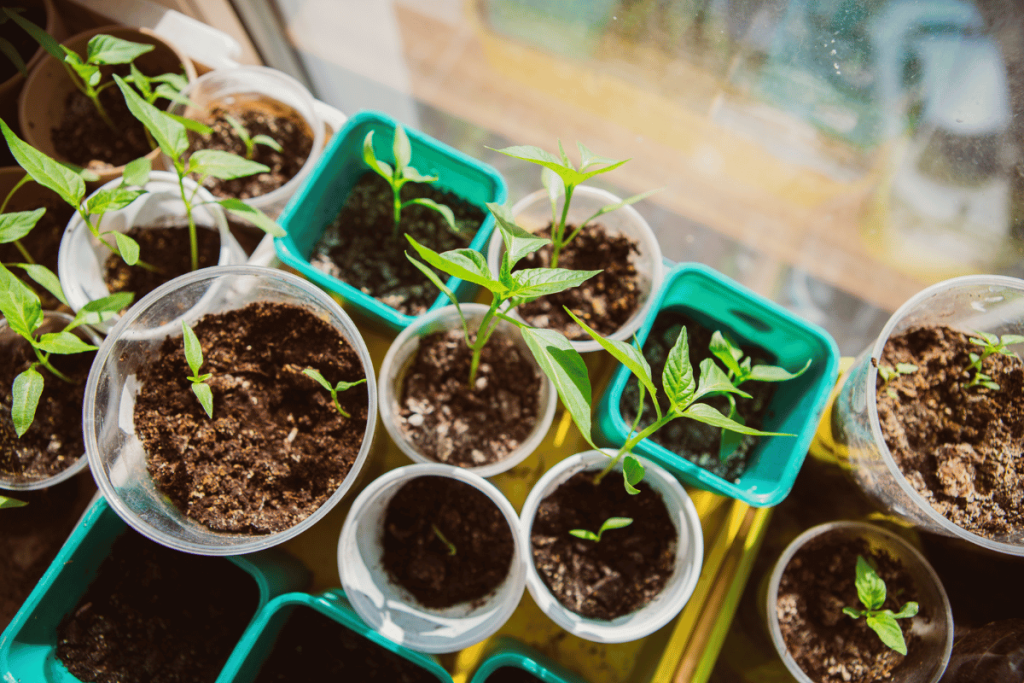
Vertical Gardening with Zucchini
vertical zucchini gardening offers a multitude of benefits for gardeners, especially those with limited space. By maximizing garden space with vertical structures like trellises, improving air circulation to reduce the risk of diseases like powdery mildew, and providing easy access for harvesting, gardeners can enjoy a successful and bountiful harvest of this versatile vegetable. Whether you’re a seasoned gardener looking to optimize your harvest or a beginner eager to try your hand at vertical gardening, incorporating these techniques into your gardening practice can lead to a rewarding and fulfilling experience. So, why wait? Start growing your vertical zucchini garden today and reap the rewards of fresh, homegrown produce right in your backyard. Happy gardening!


